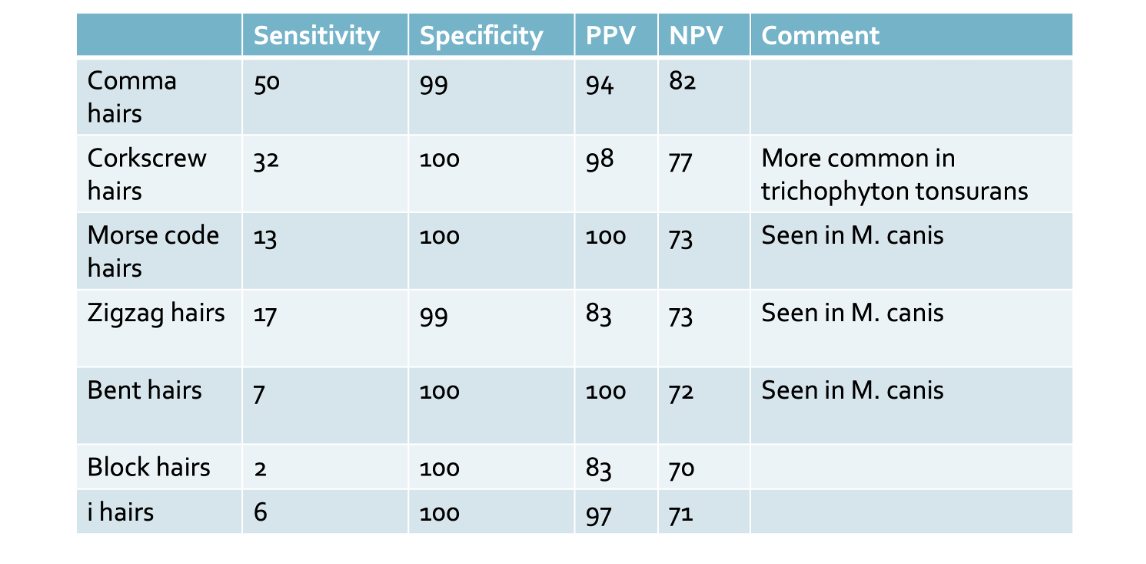Trichoscopy of Tinea Capitis: Comma Hairs are Most Common Specific Finding
Trichoscopy for Differentiating Alopecia Areata and Tinea Capitis
The most common causes of hair loss in children are alopecia areata, trichotillomania, tinea capitis and telogen effluvium. Trichoscopy is a very helpful too for differentiating many of these conditions.
Tinea capitis is common in children. Prepubertal children are more commonly affected than post pubertal children and adults. Although mycological examination is considered to be the gold standard diagnostic method in tinea capitis, trichoscopy is extremely valuable tool to assist with the diagnosis.
Gondogdu M et al, 2022
The authors of a recent study set out to evaluate differences using trichoscopy between alopecia areata and tinea capitis. 34 children with tinea capitis and 21 children with alopecia areata were evaluated. The frequency of the various trichoscopic findings are shown in the table below.
Comma hairs were most common in tinea capitis followed by scale and broken hairs. In alopecia areata, exclamation mark hairs were most common followed by black dots and yellow dots.
Comment and Summary
This is a nice study puts comma hairs again at the top of the list of trichoscopic findings in tinea capitis.
This study also requires one to review again the wonderful 2020 study by Waskeil-Burnat and colleagues. The numbers in the Gondogdu M et al study are similar to the systemic review by Waskell-Burnat et al but of course not identical.
The Waskeil-Burnat et study was a very nice systematic review of all studies related to the trichoscopy of tinea capitis. The authors calculated the frequency, sensitivity, specificity, and positive and negative predictive values of the typical trichoscopic findings for tinea capitis.
The frequency of trichoscopic findings was as follows:
FREQUENCY OF THE “SPECIFIC” FINDINGS
FREQUENCY OF THE “NON-SPECIFIC” FINDINGS
The sensitivity, specificity, positive predictive value and negative predictive value of these trichoscopic findings was as follows
REFERENCE
Gondogdu M et al. Evaluation of dermatoscopic findings of alopecia areata and tinea capitis in pediatric patientsJ Cosmet Dermatol. 2022 Feb 4.
Waskeil-Burnat et al. Trichoscopy of Tinea Capitis: A Systematic Review. Dermatol Ther (Heidelb). 2020 Feb;10(1):43-52.
This article was written by Dr. Jeff Donovan, a Canadian and US board certified dermatologist specializing exclusively in hair loss.




